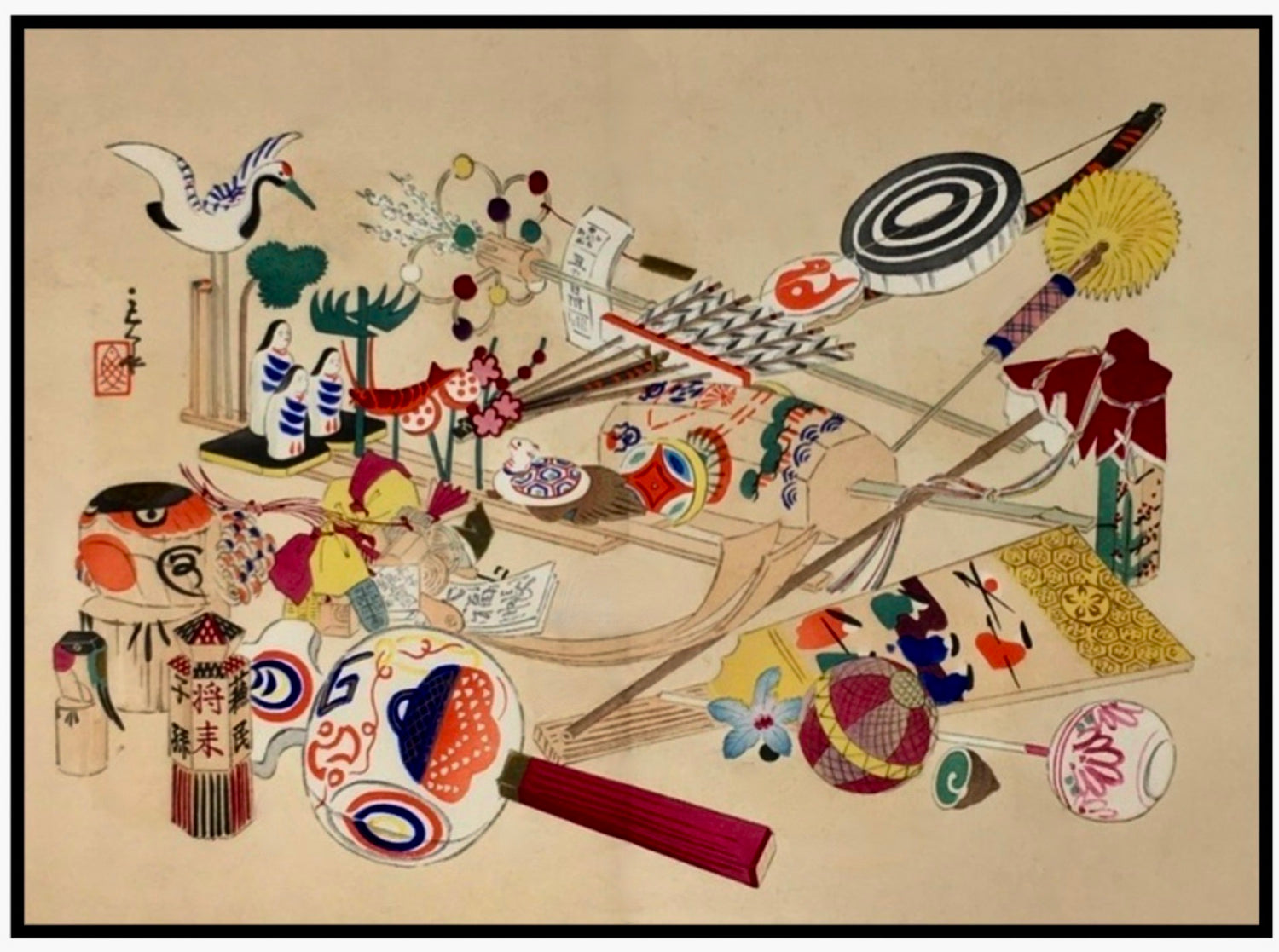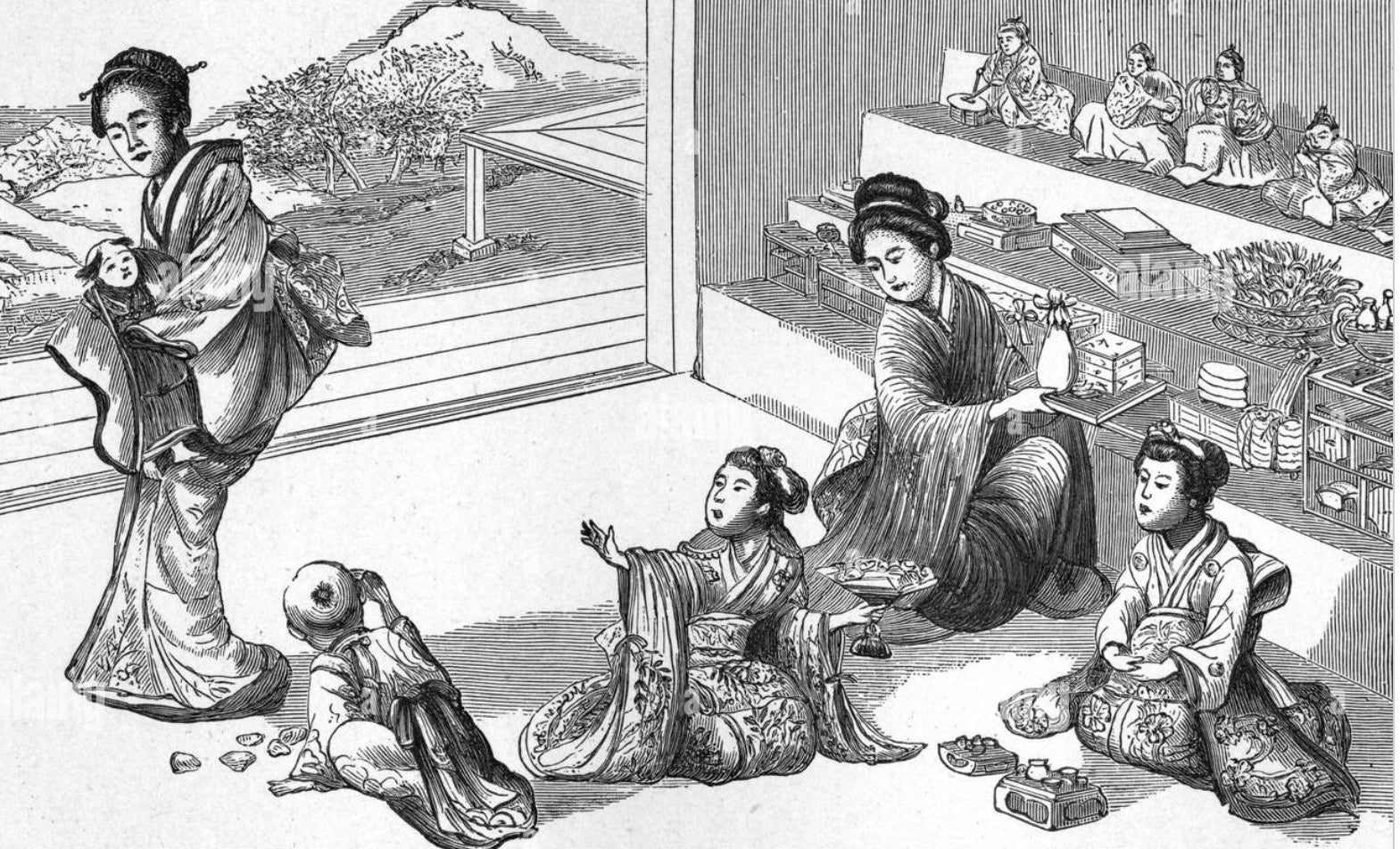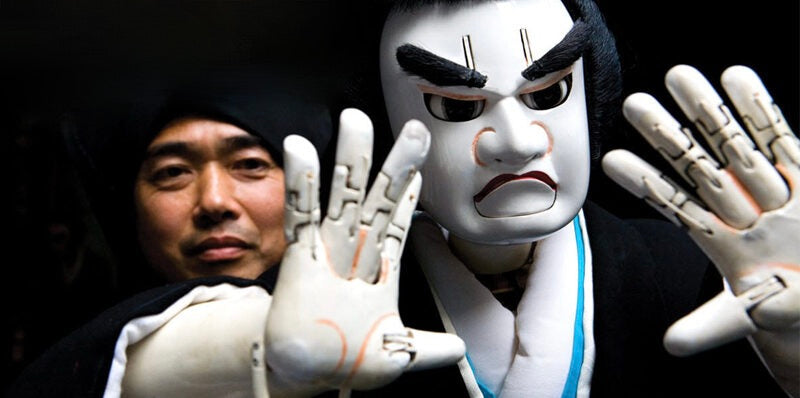Japan possesses one of the richest traditions of dolls and toy making in the world which were celebrated in twentieth century Japanese prints substantiating their importance to adults and children of the period, and have traditionally been given as precious gifts at important cultural events.
Many types of mocha, which translate as regional folk toys, (more appropriately called kyodo gang), were made of locally available materials, and first sold on festival days and near specific shrines associated with religious beliefs. These lovely and expressive pieces were brought home or given as omiyage, (gifts), and brought back from holiday by those participating in pilgrimages to shrines. Below records a girl playing with a Tamari ball made by her grandmother, and two other girls opening a Kokeshi mailer containing a love note.

Beginning in1860s, Westerners immediately became enamored with ‘things Japanese’ and made popular through woodblock prints, capturing many aspects of daily life in the form of play objects during the Edo period. It was in that very same decade that ukiyo-e woodblock prints were introduced, which inspired artists and printmakers recording the regional "paradise at play". Many of Japan's toys were sold in shops at Onsens, (hot spring resorts), and village fairs, which have delighted children and adults alike which formed the backbone of Japan’s exciting toy export industry in the late nineteenth century.

You can experience some of the pleasures of that Japanese visual art along with some of the pleasures its’ toy culture by, visiting our section on Vintage Japanese Toys as well as our e-Books on the subject, all of which are rooted in Japanese mythology and regional cultures.
This Blog is specifically focused on the diversity of Folk Art toys that have been historically recorded in woodblock prints. Above is a ShiShi, which was a friendly guardian meant to make others feel protected. Below, from left to right, top to bottom, are representatives of toys that were made to inspire children: Zenko, a Fox jumping jack, seen as a kabuki actor, but more importantly associated with the Shinto spirit Inari; an Ox, and Ox-cart which symbolizes diligence and patience; Kosadate uma, or “child-raising horse” which was a charm for protecting children; Zubombo, a paper dancing lion with clam shells on his feet, providing agility in an effort to drive away evil spirits by anchoring his feet firmly in accomplishing tasks; a Tai Bream (fish) pull toy which brings good luck and happiness; Koma to sōon mēkā, (Boy's Festival spinning tops and noise makers); Tsubame, a barn swallow suspended from a length of green bamboo supportive of fidelity in marriage and fertility; Okiagari Onna Daruma, a female interpretation of Daruma, who is a symbol of perseverance, good luck, and aiding in making dreams come true; a Puppet, which is a symbol of the presence of the deities, and typically found at religious festivals; Also seen are Traditional Kokeshi dolls used to inspire a greater appreciation of family, craftsmanship, and culture/tradition; and several wood Bird Whistles, used as an audio guide to support physically challenged children; a version of a Rabbit/Hare Pounding Mochi, associated with rebirth, fertility, sensuality, and the celebration of the New Year. Next is Maneki Neko with a raise right paw (for financial prosperity and good fortune), or raised left paw (for friendship and welcoming) for which some have an articulated limb giving life to the figure. Additionally we find a toy referred to as Hago-iti (battledores), which is played by girls played with shuttlecock at New Years. And a most favorite game for boys is the Tsuri, (yoyo) and seen in many woodblock prints. And finally, Koinobori (carp streamers/windsocks), traditionally flown on Children’s Day/Boys’ Day, wishing for health and future career success.




